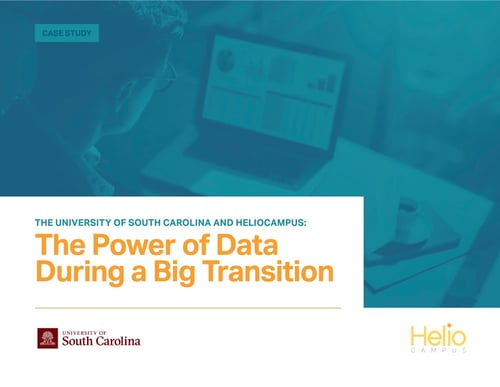Higher Education Data Analytics
The Power of Data During a Big Transition

University of South Carolina
The University of South Carolina (USC), established in 1801, is a public research university in Columbia, South Carolina. During the fall of 2018, the long-time president of the University of South Carolina, an eight-campus system serving over 50,000 students, announced his retirement the following year. With his announcement came the realization that new leadership would need a clear snapshot of strategic improvement opportunities in order to succeed – and that the current siloed data systems weren’t going to supply sufficient insights.
Revamping their data systems and capabilities was step one, with the end goal of improving data self-service and making operational reporting more efficient. To accomplish this rapid transformation, USC partnered with HelioCampus.
How USC System Uses the Data
From Reactive to Proactive
USC began to analyze their liabilities and imagine an ideal future for their data processing and analytics. Due to data silos and varying levels of access across the campus community, it often led to contradictory reports and confusion of roles and responsibilities. The end goal of their partnership with HelioCampus was a move from a reactive to proactive state by using data models to improve accuracy and allow administrators to access data on their own time.
Pivoting in a Pandemic
Adding to the complexity of the problem was the realization that few people had previously been concerned with understanding, interpreting, and using Blackboard data. With their efforts refocused in the short-term, HelioCampus rapidly developed new dashboards for USC with a focus on LMS data and student engagement. This approach will enable the university to ensure they are engaging their student body – even during a pandemic – and helping to boost both morale and retention.
Calling in the Experts
Long after the pandemic, USC will continue to use data to better serve their student body, with plans to use their new dashboards to analyze how marginalized and low-income students are enrolling, performing, and succeeding.



